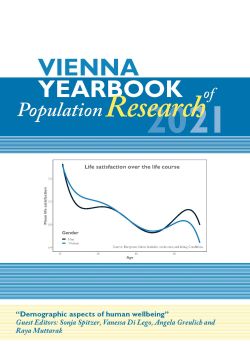
Vienna Yearbook of Population Research 2021, pp. 39-64, 2021/03/09
Demographic Aspects of Human Wellbeing

The current practise of cost-benefit analysis inWestern countries consists of a collectionof various incompatible ideas and methodologies to obtain replicable numbersfor the costs and benefits of major public spending plans. This paper describesthe main elements of the dominant methodology, which combines consumer andproducer surplus, price-taking, government-inputs-as-outputs, hedonic pricing ofexternalities, and the issue-specific use of partial or general equilibrium thinking.The paper then discusses how that methodology can be augmented and partiallyreplaced by looking at how prospective policies would change the total number ofWELLBYs (life satisfaction-adjusted years of life) of the population. The abilityof the WELLBY methodology to address complex externalities is illustrated by theEasterlin Discount, which is a proposed reduction factor of 75% on all estimates ofprivate consumption benefits to offset the envy caused in others.
Keywords: cost-effectiveness; wellbeing; consumer surplus; Easterlin Discount; public advocacy